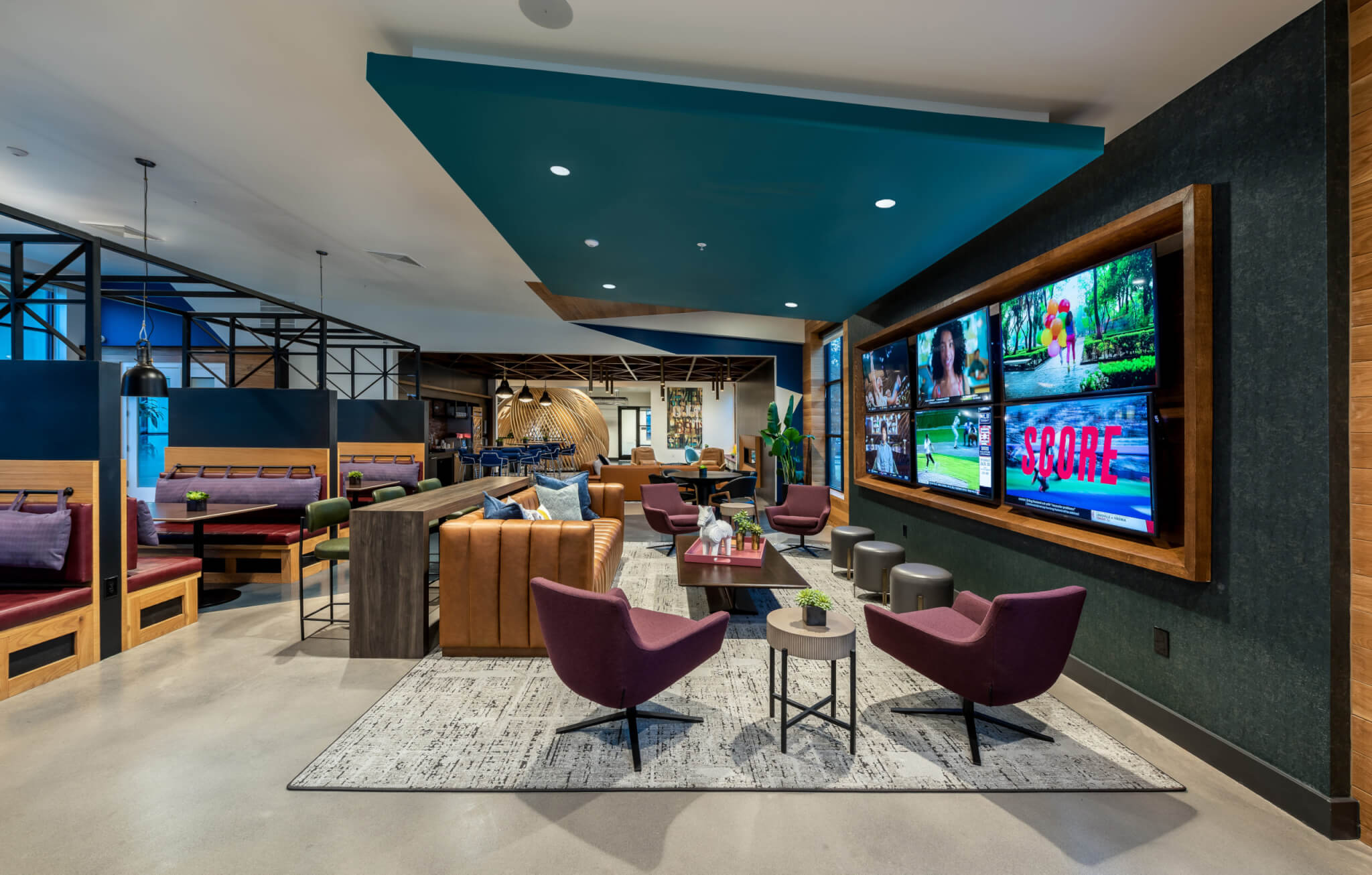Ray Oldenburg, an American urban sociologist, coined the term “third place” in his book The Great Good Place. He identified that in modern societies, time is primarily spent in our first place (home) and our second place (work). He introduced the need for this third place for social and emotional well-being, suggesting that coffee shops, post offices, neighborhood restaurants, parks and other communal spaces provide a place to create organic social bonds and participate in informal gatherings. These places are public but also have a level of intimacy.
This past year, social interactions have looked quite different and the notion of the third place in trend conversations has reemerged with a vengeance. Most commonly, we are seeing the office environment adopting the role of the third place, providing a familiar, flexible and well-rounded setting to fulfill the need for community. While we agree wholeheartedly, we see the home and work environments as two sides of the same coin. Currently, this is especially important since our typical third places have been unavailable and are in a state of evolution.
Multifamily amenities are a natural option to include third places. Amenities should always strive to promote social interaction and community-building. They cannot simply be a check list of typical spaces but, instead, need to be organic, flexible and respond directly to user needs and behaviors. A wellness offering for a suburban garden property and a wellness offering for an urban high-rise property should be different, not only in size but in programming, equipment and aesthetics. Developers, property managers, architects and designers need to be in touch with their target audience and local market more than ever to be in tune with each unique community’s needs. Why is it so important to create that connection? Amenities can be a dusty untapped resource for revenue if they sit empty. Designing amenities that people actually use, and creating a connection, turns renters into long-term residents with brand loyalty.
Owners of multifamily properties should keep the following in mind while programming for amenities that add value. Because the third place has been primary thought of as neighborhood gathering spaces, it’s important to not think only about what the surrounding neighborhood has that can supplement a property’s programming. Consider instead: What does the neighborhood not have? How can the property fill that gap for prospective residents? What are things it can offer that residents don’t have in their own units? Too many times, we walk into a clubhouse to see a generic layout that includes a large sofa, some chairs and a TV. Most residents have that kind of layout in their own unit, so how can we push that to the next level and offer something unique? Another key element is flexibility. Designing a space that is flexible means every inch is still planned but the space is interactive. Spaces aren’t meant to be stagnant; they should be dynamic, living, growing parts of the community. When the offering is more than their first and second place, it fulfills the much-needed role of third place.
